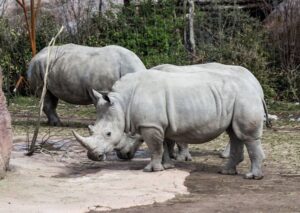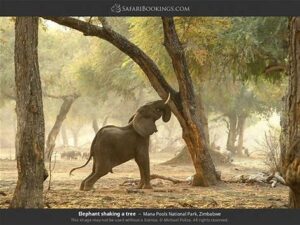The 10-key facts about Serengeti will lead us to discover the unknown facts about Serengeti that bring visitors all over the world to witness this special land. A UNESCO World heritage, covering over 30,000 square kilometers of land from Northern Tanzania to the southwest Kenya. Defined by savannah plain that stretches beyond your eye can see. A home to both herbivores and the great predators like lion and African Leopard
In this art, we will discover the mysteries and marvel of this great park. Looking into its biodiversity, cultural heritage and traditions. We shall also talk about the great migration, predator-prey interactions at the park, conservation challenges and many more that you need to know before embarking on your journey to Serengeti national park.
Ecosystem Dynamics – 10-key facts about Serengeti
The Serengeti ecosystem is defined by delicate interdependence between rainy and dry season. The wet season between November and May come with greenery vegetation that act as food for herbivores like elephant. The dry season from June to October come with greenery shortage which forces herbivores into the great migration searching for the greener pasture in the southwest.
Biodiversity Hotspot – 10-key facts about Serengeti
With over 70 species for large mammals, 500 bird species, countless small mammals and insects The park is the home to various wildlife. This is only supported by it varying habitant that include Rivers, woodland, wetland and savanna plain that support life for various lives.
Seasonal Wildlife Movements
Apart from great migration, Serengeti involve other migrations. For instance, during dry season birds migrate from Europe and Asia to the wetland of Serengeti as they are running away from the winter of Europe and Asia. Also, Elephants migrate towards lake Tarangire in search for water and green pasture. This migration adds on the biodiversity of the park and also great improve your experience.
Predator-Prey Dynamics – 10-key facts about Serengeti
The Serengeti is renowned for its dynamic predator-prey interactions, which shape the population dynamics of its wildlife communities. Lions, the apex predators of the savannah, form prides that strategically hunt herbivores, such as wildebeest and zebras, during the Great Migration, while cheetahs rely on their incredible speed to chase down prey across the open plains. These predator-prey dynamics contribute to the regulation of herbivore populations and the maintenance of ecosystem balance.
Endangered Species Conservation
The Serengeti is home to several endangered species, including the black rhinoceros, African wild dog, and cheetah. Conservation efforts focused on protecting these vulnerable species involve anti-poaching patrols, habitat restoration initiatives, and community conservation programs aimed at mitigating human-wildlife conflict and promoting coexistence.
Cultural Heritage Preservation
Indigenous communities, such as the Maasai and Hadzabe, have inhabited the Serengeti region for centuries, maintaining traditional livelihoods that are intricately connected to the land and its wildlife. Efforts to preserve their cultural heritage and promote sustainable tourism practices that respect their way of life are integral to the long-term conservation of the Serengeti ecosystem.
Climate Resilience – 10-key facts about Serengeti
Climate change poses significant challenges to the Serengeti ecosystem, affecting rainfall patterns, temperature regimes, and the distribution of plant and animal species. Adaptive management strategies, including the establishment of wildlife corridors and the implementation of climate-smart conservation practices, are essential for enhancing the resilience of the ecosystem and mitigating the impacts of climate change on its biodiversity.
Scientific Research and Monitoring
The Serengeti serves as a living laboratory for scientific research, providing valuable insights into ecological processes, animal behaviour, and conservation management strategies. Long-term monitoring programs, such as the Serengeti Ecosystem Monitoring project, track changes in vegetation cover, wildlife populations, and human-wildlife interactions, informing evidence-based conservation decision-making.
Tourism Management – 10-key facts about Serengeti
Sustainable tourism management is crucial for balancing the economic benefits of tourism with the conservation needs of the Serengeti ecosystem. Measures such as visitor carrying capacities, eco-friendly accommodations, and community-based tourism initiatives. They help minimize the ecological footprint of tourism activities while maximizing the positive socio-economic impacts on local communities.
Global Importance
As a UNESCO World Heritage Site and one of Africa’s most iconic wilderness areas. The Serengeti holds significant global importance as a symbol of biodiversity conservation and sustainable development. Its preservation serves as a beacon of hope for wildlife conservation efforts worldwide. It inspires people to appreciate and protect the natural wonders of our planet for future generations.
Conclusion – 10-key facts about Serengeti
In essence, the Serengeti is a complex and dynamic ecosystem teeming with life. Shaped by millennia of ecological processes and human interactions. Its conservation requires a multifaceted approach that addresses ecological, social, and economic dimensions. The park ensures the continued survival of this extraordinary wilderness for generations to come.




